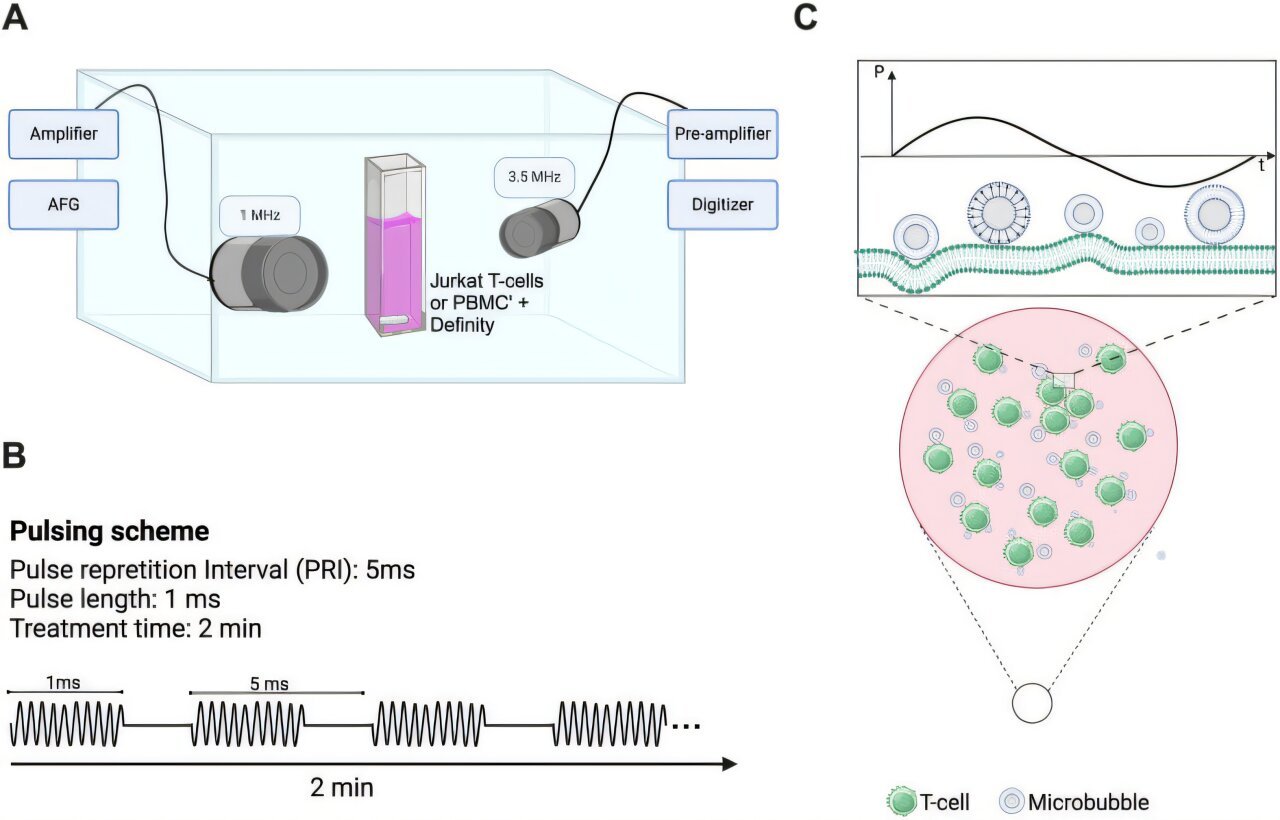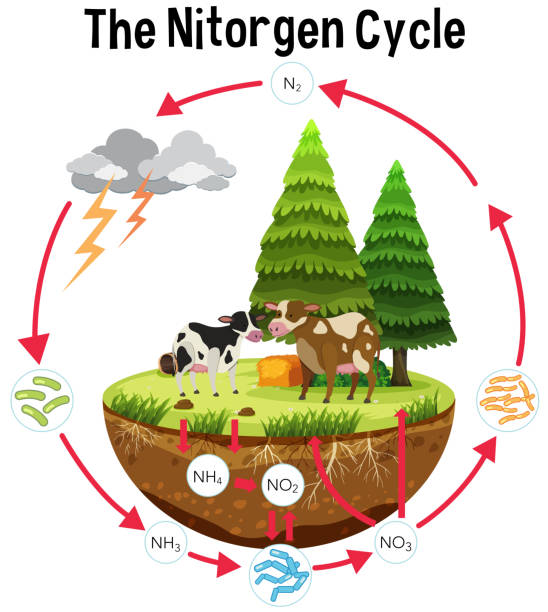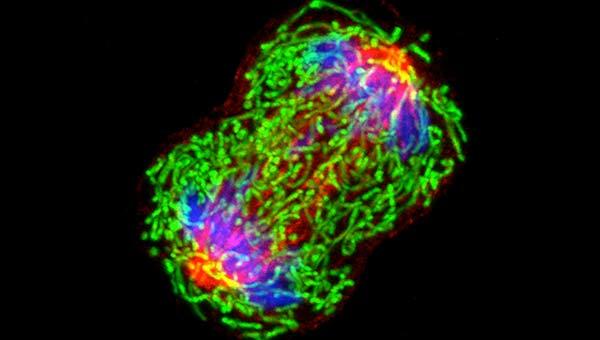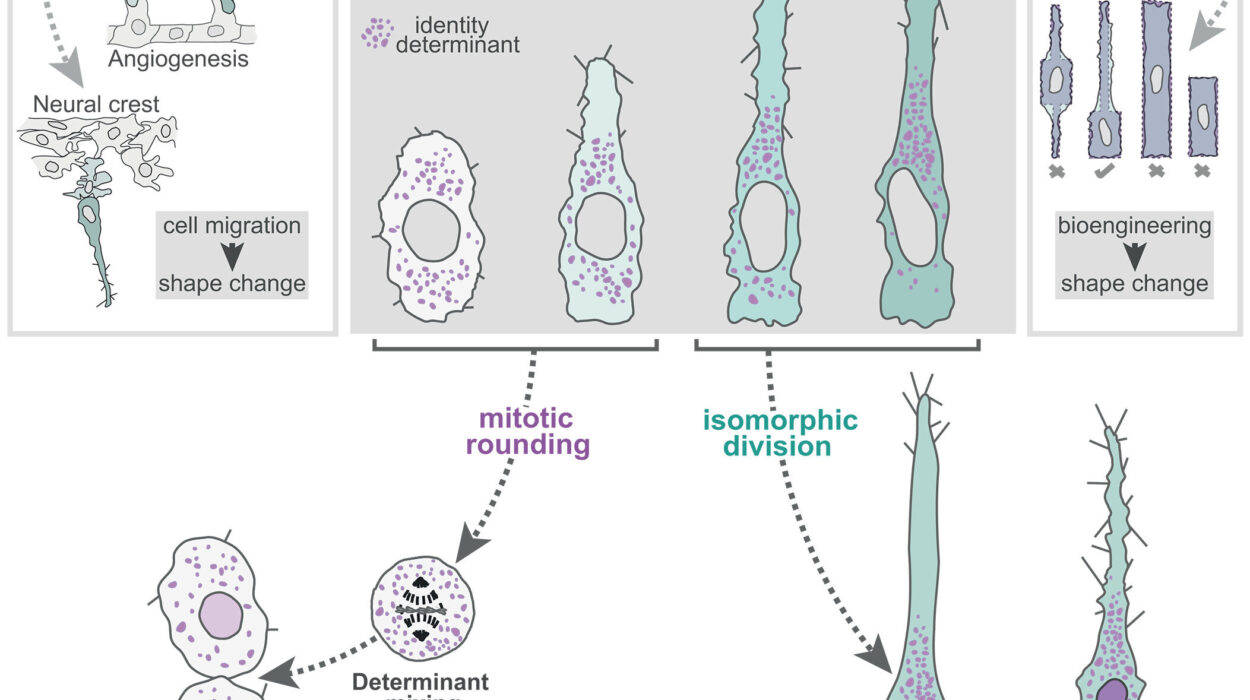A recent study from researchers at Concordia University proposes a promising new approach to cancer treatment that leverages ultrasound-guided microbubbles, a technology already commonly used in medical imaging and drug delivery. This research, published in Frontiers in Immunology, reveals how ultrasound can alter the behavior of immune cells—specifically T cells—by enhancing their ability to produce vital immune signaling molecules, called cytokines, which are crucial in the fight against cancer.
Novel Use of Ultrasound and Microbubbles in Immunotherapy
The research team, composed of scientists from the departments of Biology and Physics, has developed a method that uses ultrasound to temporarily increase the permeability of T cell membranes. The process works by targeting human immune cells with ultrasound beams and clinically approved contrast agent microbubbles. The bubbles, upon exposure to high-frequency ultrasound, vibrate rapidly, creating pressure on the cell membranes. This physical stimulation mimics the natural behavior of T cells when they encounter an antigen—a foreign substance that triggers an immune response.
The interaction between the ultrasound and microbubbles causes the T cells to release a broad array of cytokines—over 90 different kinds, in fact—that would otherwise be restricted by the suppressive environment of a tumor. These cytokines are vital to activating and maintaining immune responses, and their release can be instrumental in helping the body’s immune system better target and combat cancer. Importantly, this technique does not damage the T cells themselves.
Brandon Helfield, an associate professor in both Biology and Physics at Concordia and the supervising author of the paper, explains, “We’re combining the use of ultrasound and microbubbles to help modulate brain immunology with the emerging field of cancer immunotherapy, which is the harnessing of our own immune cells to fight cancer.”
Addressing Tumor-Induced Immunosuppression
One of the significant challenges in cancer treatment is the tumor’s ability to suppress the immune system, particularly by deactivating T cells that have entered the tumor environment. Tumors often create a hostile microenvironment that hinders the ability of T cells to function properly, including preventing them from producing the cytokines necessary for coordinating immune responses. This new approach aims to overcome this problem by reactivating the T cells that have been suppressed within the tumor.
Lead author Ana Baez, a Ph.D. candidate at Concordia, explains, “The microbubbles can re-activate the cells that have been turned off inside the tumor. This process will help them release the proteins that are needed to grow additional immune and blood cells, which creates a positive feedback loop.” This feedback loop is essential because it could amplify the immune response, helping to create a more powerful and sustained attack against the tumor.
Time-Dependent Changes in Cytokine Release
The researchers also observed that the amount of cytokines released by the T cells was time-dependent. When comparing the treated cells to untreated ones, the cytokine levels increased by a factor of 0.1 to 3.6 over the course of 48 hours. This suggests that the ultrasound and microbubble treatment could have long-lasting effects, allowing for sustained activation of immune cells. However, the study also found that as the ultrasound treatment made the T cell membranes more permeable, the overall cytokine release began to decrease. This observation suggests that there may be an optimal window for maximizing the immune response.
Although the study is still in its preliminary stages, conducted through benchtop experiments, the team is hopeful that it could provide valuable insights into the underlying pathways that regulate immune responses against cancer. The researchers believe their work could pave the way for improving and augmenting current cancer treatments and cellular therapies.
Potential for Non-Invasive, Repeatable Treatment
One of the key benefits of this method is that it is entirely non-invasive. Unlike traditional cancer therapies, such as surgery or chemotherapy, ultrasound and microbubbles offer a way to target immune cells without physically intervening in the body. Helfield notes, “We already use microbubbles clinically as image-guided tools. In the future, we could manipulate the beam to go from imaging to a therapeutic sequence. This would localize the effect on the T cells so you are only activating the ones where the beam is.”
The non-invasive nature of this technique could also make it highly repeatable, offering a new avenue for treating cancer that could complement other existing treatments. Baez adds, “We may also be able to include cancer-fighting drugs that target the tumor in the treatment. The technique is completely non-invasive, so we can always repeat it.” This flexibility is particularly appealing because it offers an option to continue treatment without causing harm to the patient’s body.
A Multi-Disciplinary Collaboration
This research is the result of a multi-disciplinary collaboration at Concordia University, with contributions from Davindra Singh, Stephanie He, Mehri Hajiaghayi, Fatemeh Gholizadeh, and Peter Darlington. The project highlights the importance of cross-disciplinary efforts in advancing medical research, particularly when addressing complex challenges like cancer treatment.
By combining the expertise of biologists, physicists, and immunologists, the team has opened up new possibilities for the future of cancer immunotherapy. Their work aligns with the growing trend of using novel technologies to enhance the body’s natural defenses against cancer and improve the efficacy of treatments that harness the immune system.
Reference: Ana Baez et al, Immunomodulation of human T cells by microbubble-mediated focused ultrasound, Frontiers in Immunology (2024). DOI: 10.3389/fimmu.2024.1486744






